The COVID-19 pandemic has accelerated digital transformation around the world in the past year. According to the GSMA, state of Mobile Internet Connectivity 2021 report, 51% of the world’s population – over 4 billion people – were using mobile internet by the end of 2020. This is an increase of 225 million from the end of 2019.
According to the report, the internet provided people with a key means to keep in touch and access important information, services and opportunities to support their lives and livelihoods, particularly during lockdowns.
In low- and middle-income countries (LMICs), most people access the internet via mobile, and for many, it is the only way to get online.
As a result, mobile internet use has grown steadily year on year in LMICs. This now accounts for just over three-quarters of the world’s connected population.
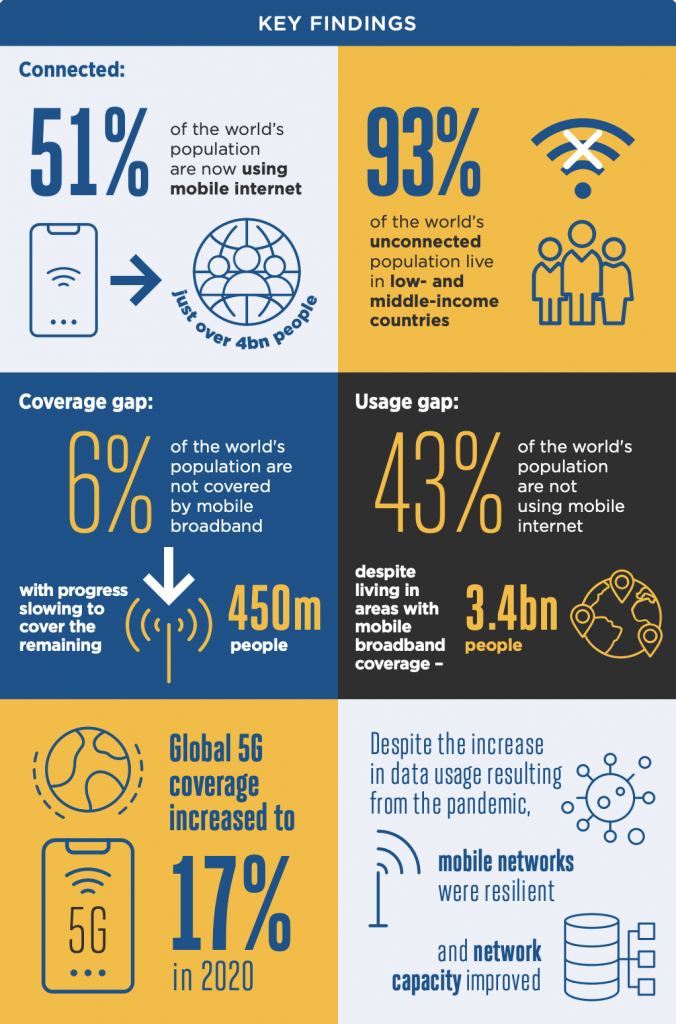

Despite this progress, the pandemic has highlighted how big gaps in connectivity persist, even in high-income markets. The digital divide persists, with 93% of the unconnected around the world living in LMICs.
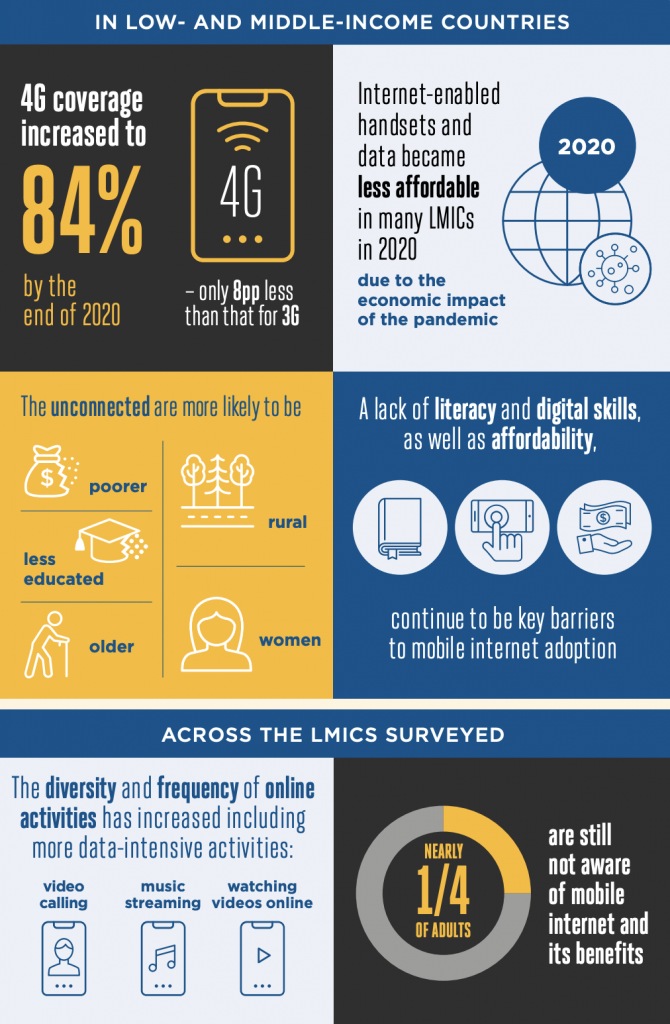

According to the report, those living in areas without mobile broadband coverage stands at 450 million people (6% of the world’s population). Although the biggest coverage gains have been in Sub-Saharan Africa and the Pacific Islands, Sub-Saharan Africa is still the region with the largest coverage gap, at 19%.
In 2014, almost a quarter of the world’s population did not have mobile broadband coverage. Six years later, only 6% remains uncovered. This means that 94% of the world’s population now have access to a broadband network.
Globally, smartphones accounted for 68% of total mobile connections in 2020, compared to 64% in 2019 and 47% in 2016.
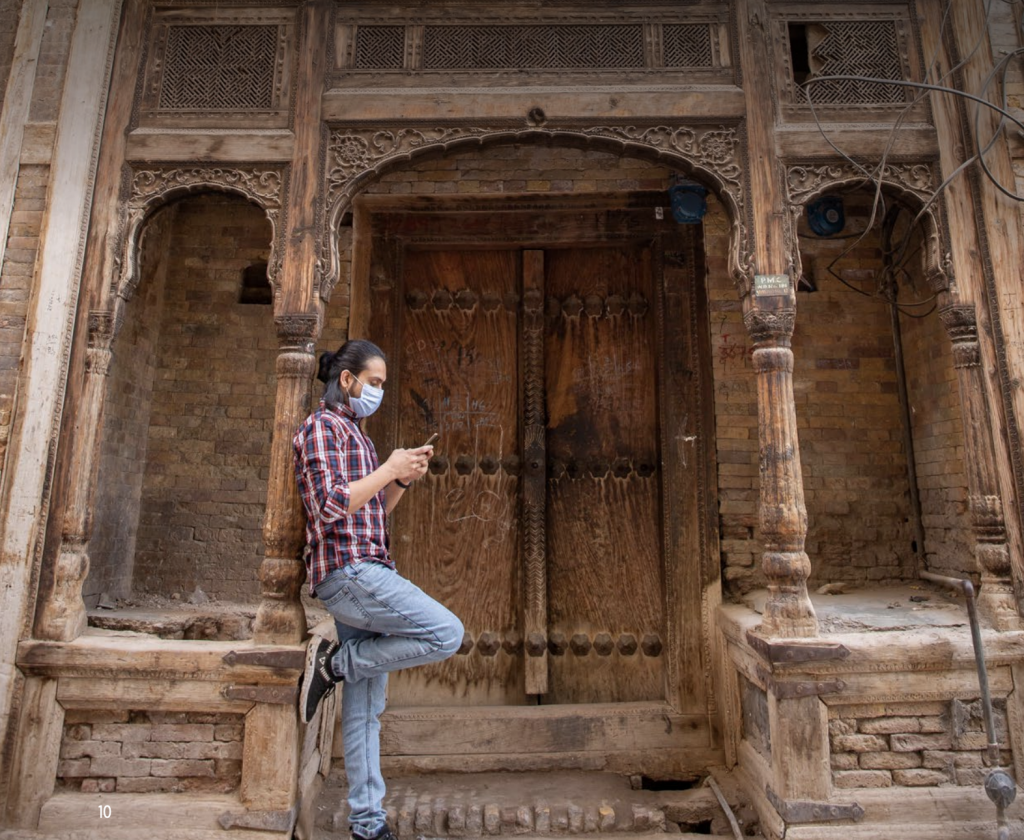

Interestingly, 3.4 billion people are not using mobile internet, despite living in areas with mobile broadband coverage. Although the usage gap has narrowed in the past 2 years, it still represents 43% of the world’s population.
Between 2019 and 2020, the reduction in the usage gap has been driven primarily by increased mobile internet adoption in
East Asia. Yet, South Asia still has the largest usage gap with 61%.
Across the surveyed countries, mobile users who are aware of the internet report a lack of literacy and digital skills, as well as affordability (particularly the cost of internet-enabled handsets), as the main barriers to
using mobile internet.
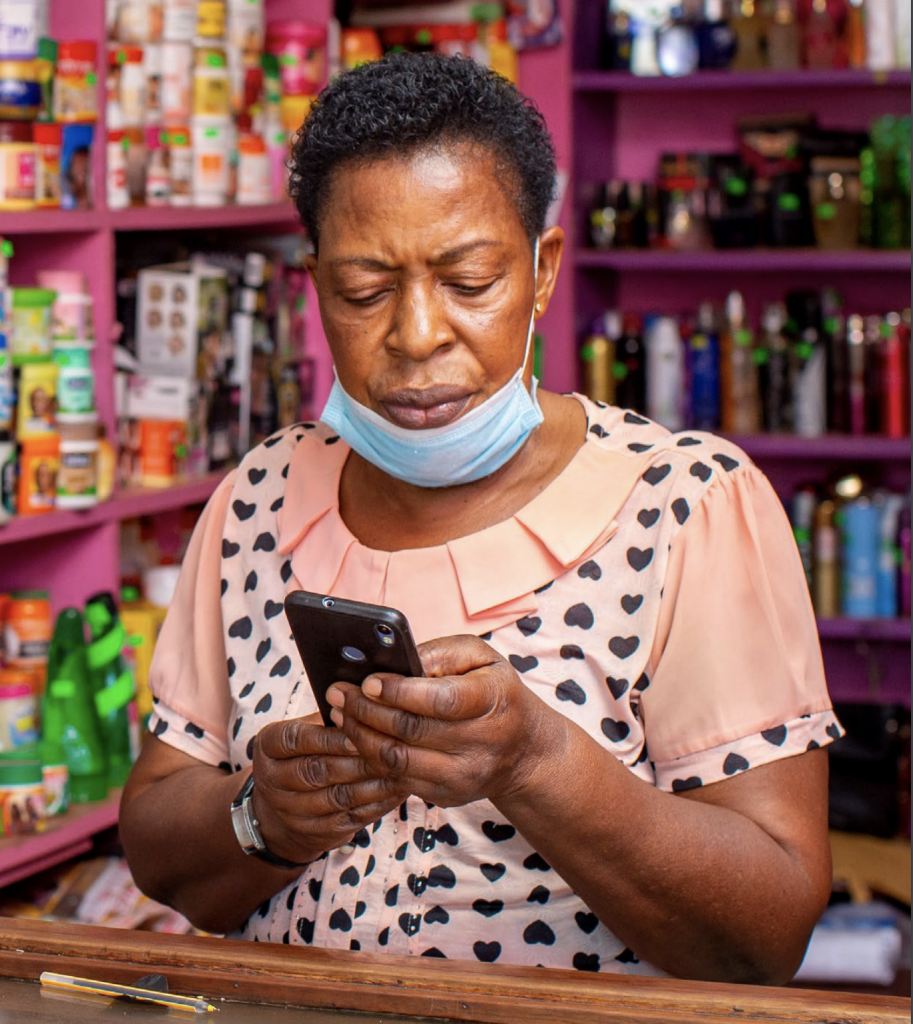

The report also indicates that women in LMICs are still 15% less likely to use mobile internet than men (234 million fewer women) using mobile internet, though the gender gap in mobile internet has continued to narrow. Also, people living in rural areas are also increasingly using mobile internet, but a significant rural-urban gap persists across the surveyed countries.
Sadly, internet-enabled handsets and data became less affordable in many LMICs in 2020 as a result of the economic impact of the COVID-19 pandemic. Despite a fall in the cost of entry-level handsets and data in many LMICs, affordability has worsened in many countries because of the decline in per capita income due to the pandemic.
Sub-Saharan Africa is however an exception as handset affordability improved especially with the influx of low-grade Chinese variants and foreign used options. South Asia also experienced an improvement in data affordability.
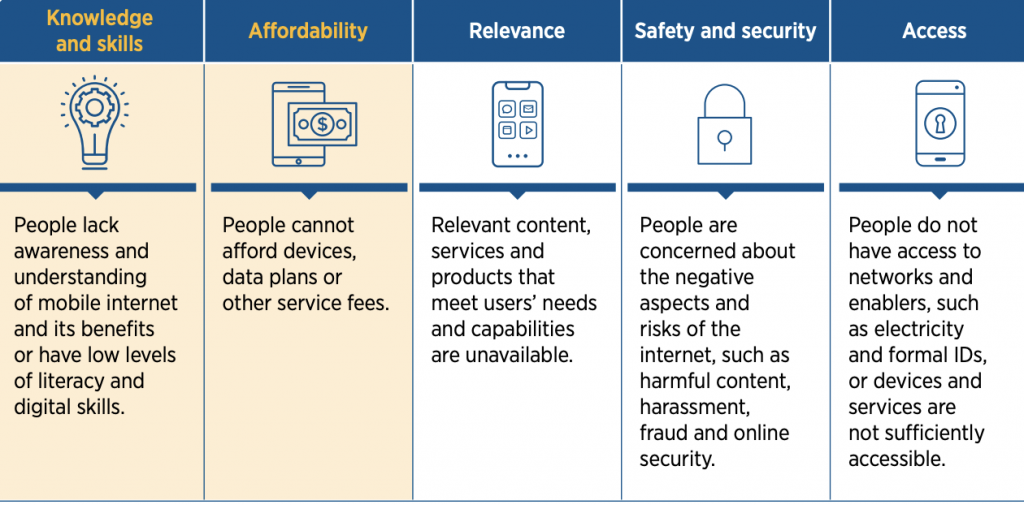

According to the report, a combination of increased rural coverage, awareness of mobile internet, decreases in the cost of entry-level smartphones and smart feature phones, as well as innovative financing schemes and payment models available to low-income segments, are likely to have contributed to the changes observed in these countries.
By implication, it was observed that the diversity and frequency of online activities of users have increased across the LMICs surveyed. There has been growth in more data-intensive activities, such as video calling, music streaming and watching videos online.
The good part: mobile networks rose to the increased demand. According to the survey, networks were resilient and network capacity improved in the face of increased data usage resulting from the pandemic, work from home and increased video conferencing.
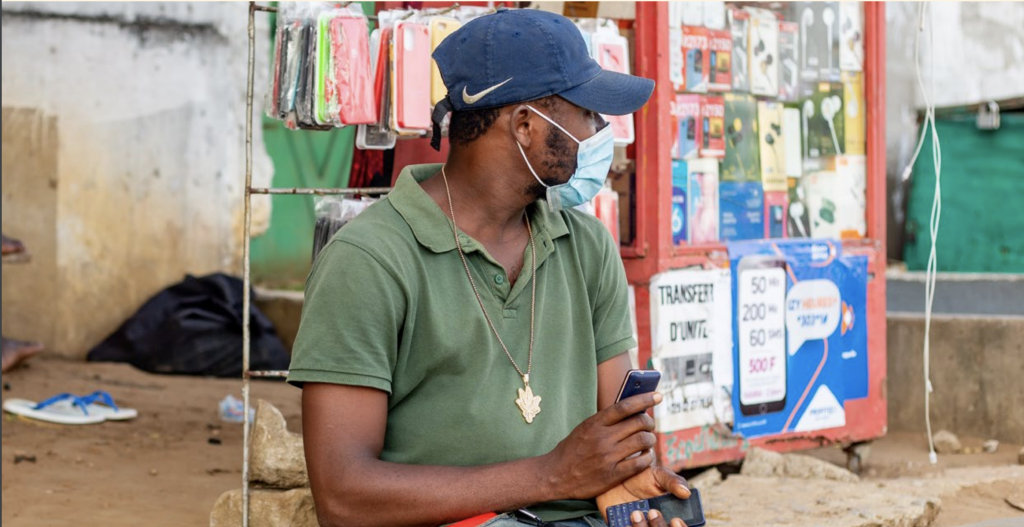

Mobile data traffic reached record highs in 2020, with global data per user reaching more than 6 GB per month – double the data usage for 2018. At the end of 2020, download speeds were on average higher than the year before.
Overall, 4G network coverage continued to expand in the past year while a good number of countries have transitioned to the 5G band. For instance, across LMICs, 4G coverage increased to 84% by the end of 2020 – only eight percentage points less than that for 3.5G.
The global 5G coverage increased from 5% in 2019 to 17% in 2020. By the end of the year, 5G networks had been launched in 10 LMICs, with China leading the way.
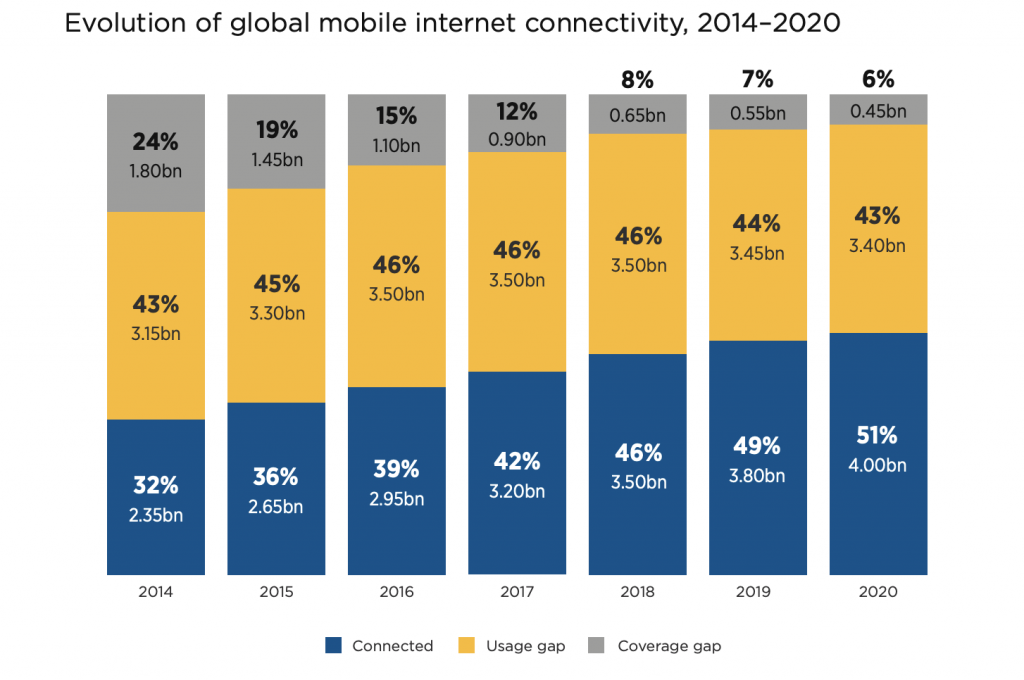

The interesting case of Africa
Across the eight LMICs surveyed in 2020, the rural-urban gap reduced in some countries (notably Kenya, Nigeria and Guatemala), while in the other markets it remained relatively unchanged or has increased in the
case of Algeria.
As it stands, Sub-Saharan, Africa has the highest percentage of basic or feature phone connections, accounting for 45% of all connections. In addition, a significant share of smartphones in Sub-Saharan Africa supports 3G only, whereas in other regions the majority of smartphones are 4G or 5G capable.
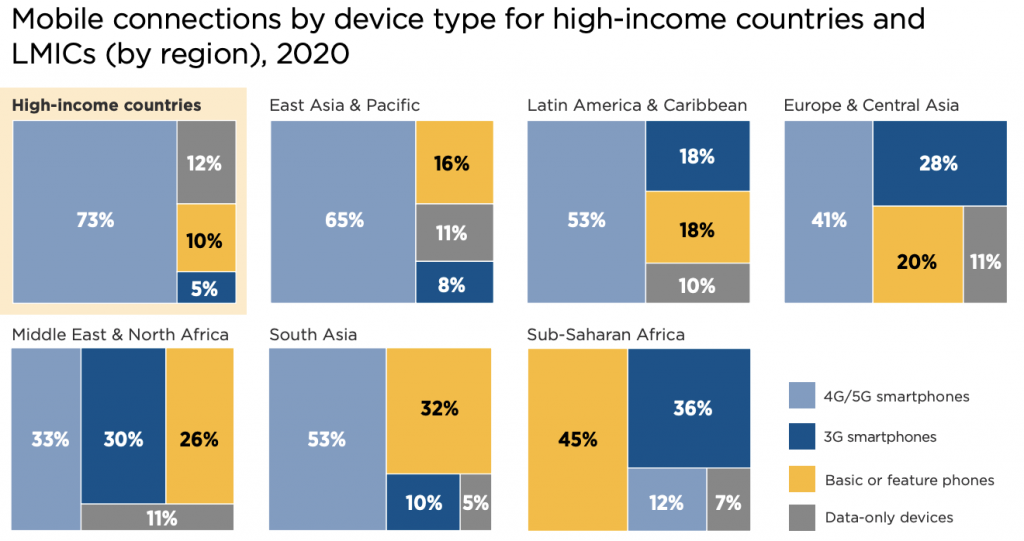

The implication of this is that if not well managed, increased levels of
digitisation can exacerbate existing inequalities. While increasing coverage of mobile broadband remains an important issue in emerging markets, it is the usage gap that is key to closing the digital divide!
The solution is for policymakers and regulators in emerging economies to should shift from the traditional infrastructure-focused approach to policy-making to a more people-centric one.
The focus should be on doubling down on efforts to tackle barriers preventing the adoption and use of mobile internet services.
About the report
The State of Mobile Internet Connectivity 2021 highlights trends in the coverage and usage of mobile internet over the last six years and the key barriers to mobile internet adoption.
This year’s report specifically looks at the early impacts of the COVID-19 pandemic, the biggest regional changes and the key challenges to address to ensure everyone can connect to the internet.






